Basil
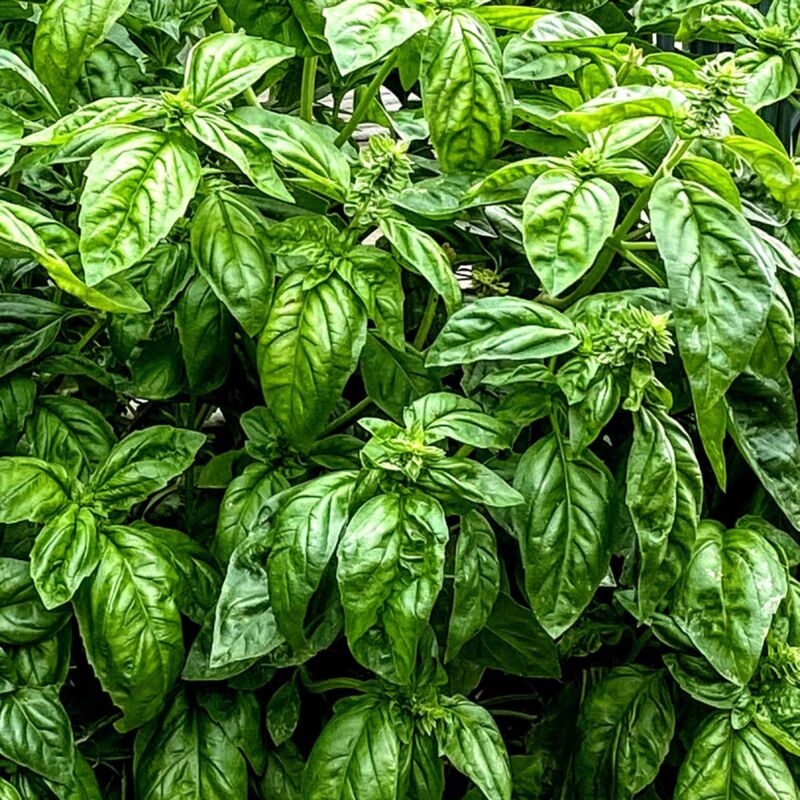
Basil (Ocimum basilicum)
Basil was widely used in ancient Rome and Greece. Its name derives from the Basilisk, a mythical serpent-like creature whose venom was so potent it could kill just by looking, and the herb was said to be an antidote to the poison.
Basil is an annual and one of the most versatile herbs with a pungent, spicy scent and enhances many savoury dishes.
There are many species and varieties of basil; Sweet basil is the most popular variety for cooking.
Seeds to seedlings
Basil can be grown from seeds, sown in trays in spring. Once seedlings reach the four-leaf stage, they can be transplanted.
I purchased a pack of six seedlings from a nursery in October, planted them in my raised bed garden 5 to 10 cm apart, and added a little compost to the planting holes dug in the previously prepared garden soil.
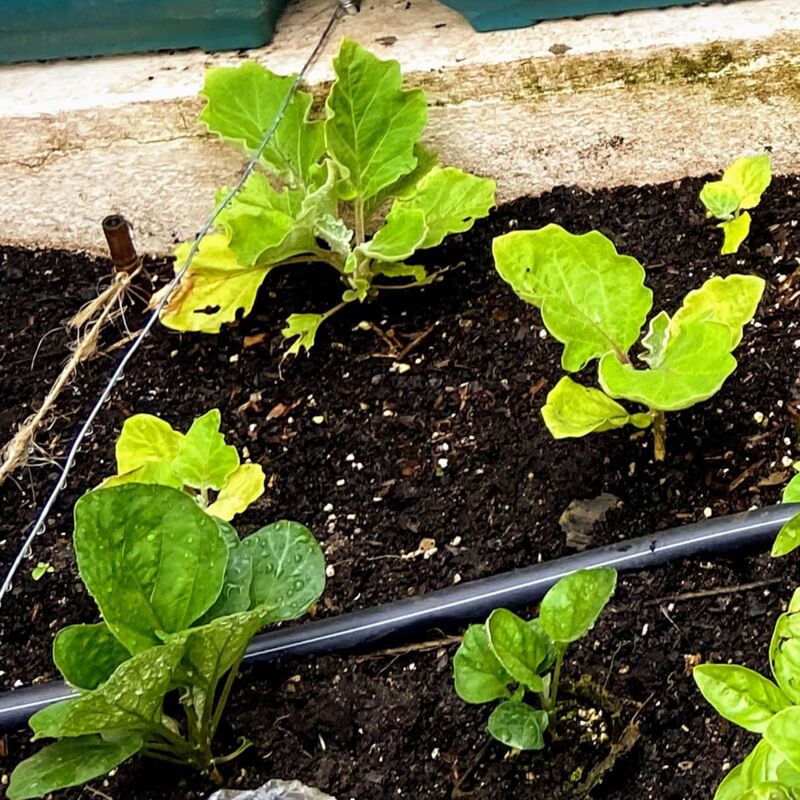
October 28
Growing Productive Plants

November 7
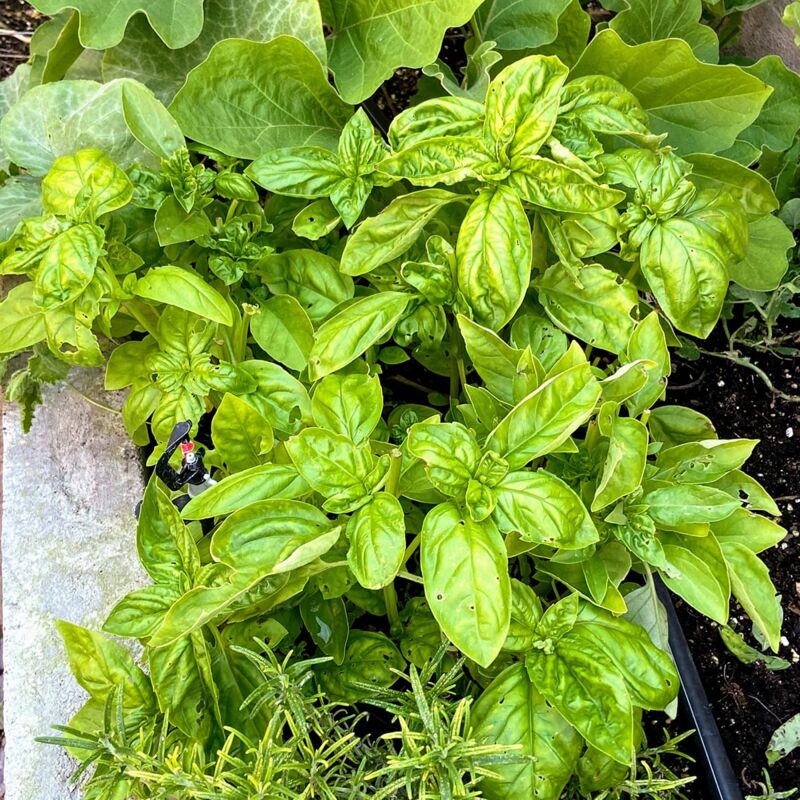
November 15
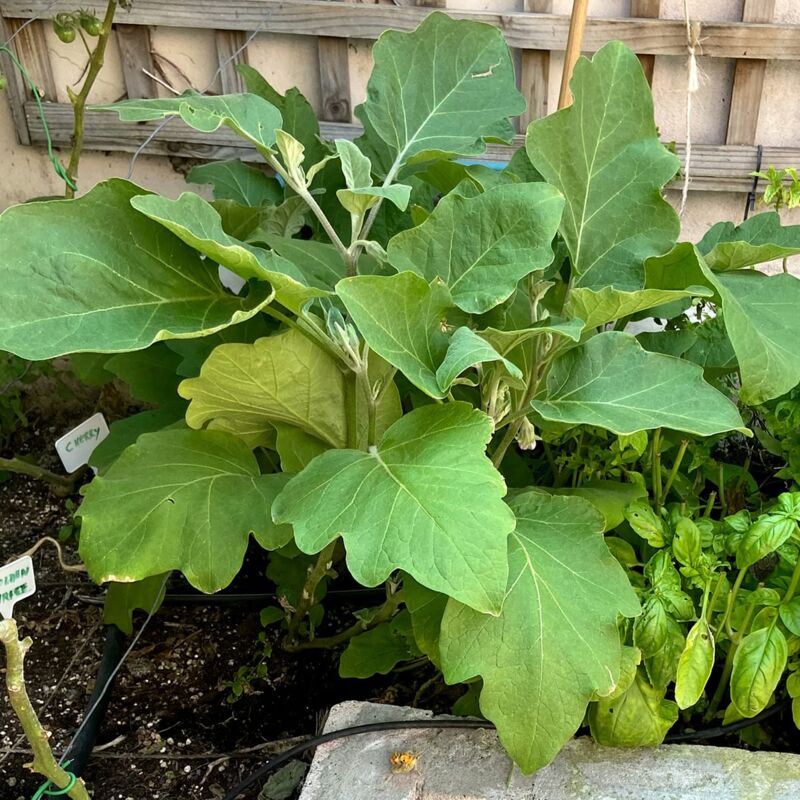
January 4
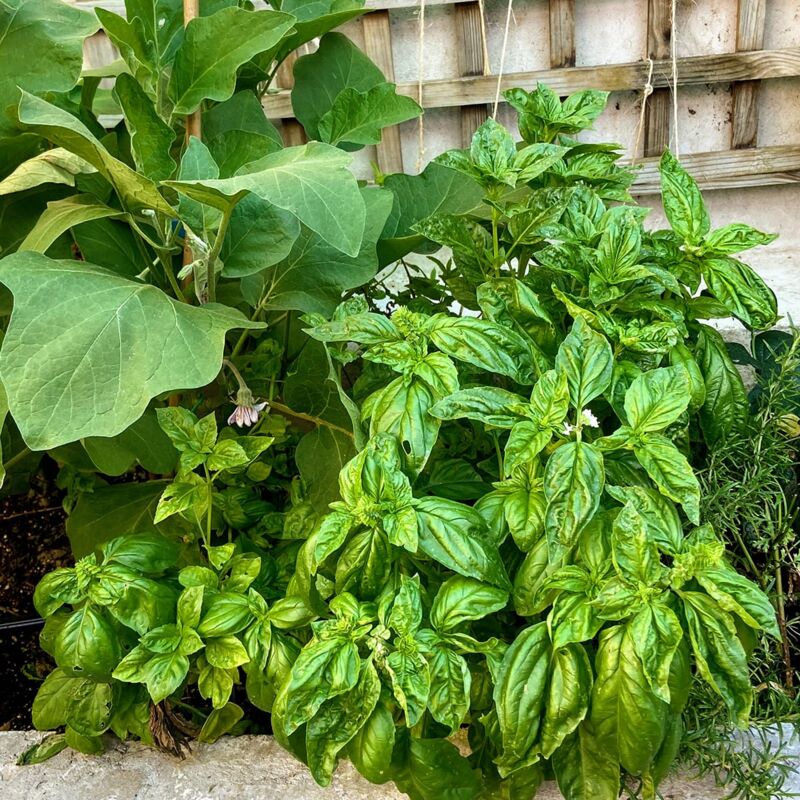
January 28
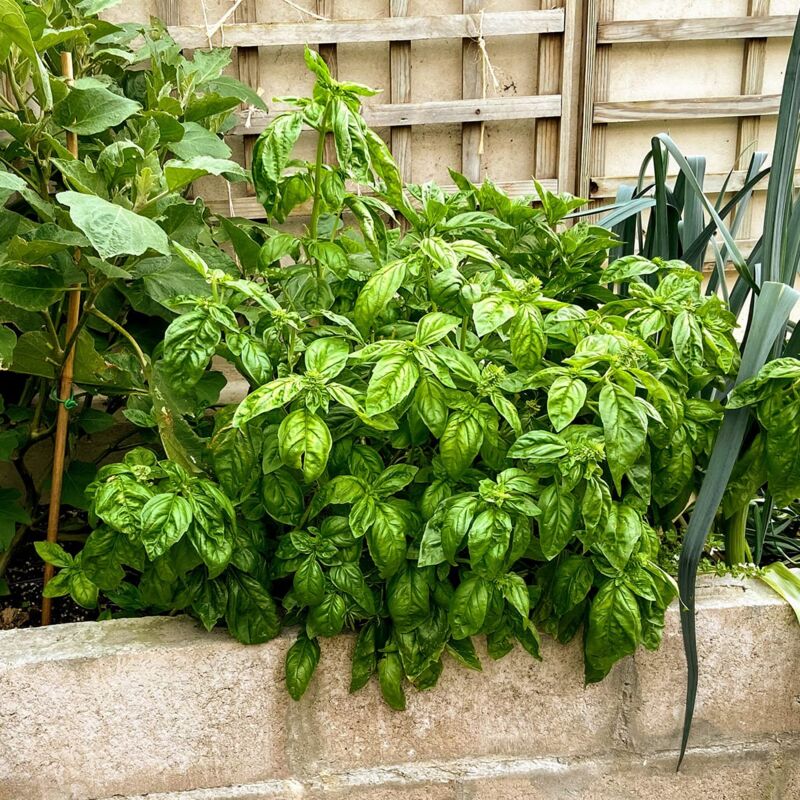
March 28
Water
The plants were regularly watered three times a day using my computerized watering system. In dry weather, I gave them an extra five minutes at midday.
Light
Basil likes the sun but prefers the semi-shade in mid-summer, and I used shade cloth system to accommodated this requirement.
Fertilizer
Due to the soil structure and preparation, it was unnecessary to provide any additional fertilizer during the growing season.
Pruning
Regular pruning is necessary to ensure that basil yields continuously through the season. I started pruning after the seedlings had had their six leaves, they should be pruned back to above the second pair.
Some sources recommend that they should be pruned back to their first pair of leaves every time they get six or eight leaves on a branch. However, I have found that it is only necessary to regularly prune back the flower and seed heads when they appear.
Regular pruning with six to 12 plants should yield 4 to 6 cups of leaves per week during the season.
It is essential to cut off the flowers as soon as they appear to prevent them from going into seed. If this is done, the plant should continue being productive season-long, as the plants in the photos demonstrate.
Companion Planting
Basil can be planted between rows of tomatoes, cucumbers, eggplants, green peppers and squashes. It enhances all of their flavours.
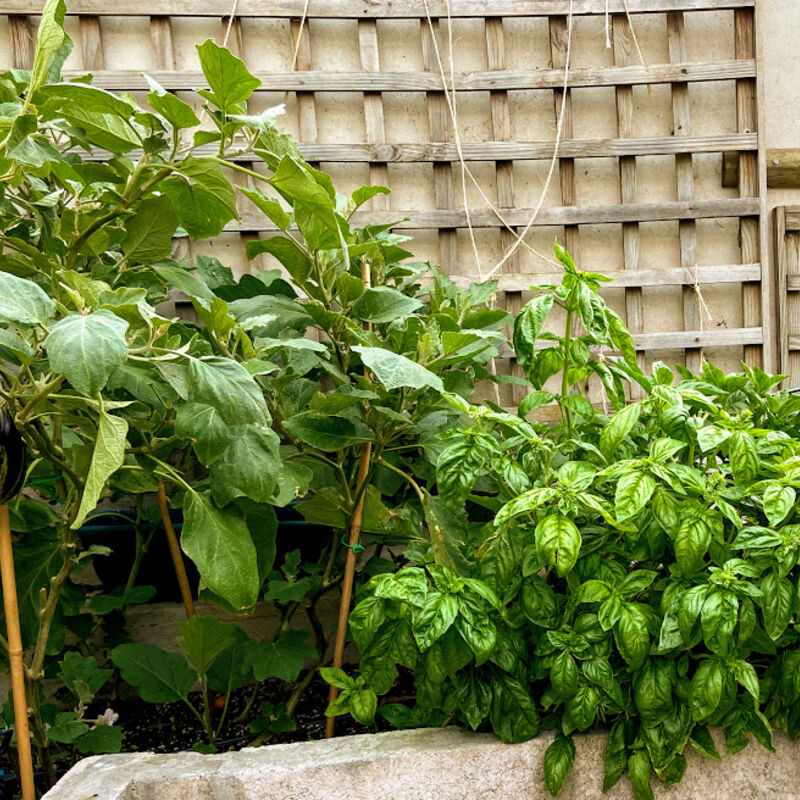
Companion planting - Eggplant, Tomatoes, and Basil
Harvesting
The leaves can be removed at any time for culinary use, and the seedheads can be taken off for potpourris. The whole plant can be dried at the start of winter.
Domestic
Branches of fresh basil hung up will keep flies away. Dried basil stalks burnt on a fire deter mosquitoes.
Culinary Basil
Basil is one of the most important culinary herbs. Sweet basil, the most common type, is suggestive of liquorice and cloves.
-
Basil is used in sauces, sandwiches, soups, and salads and is in top form when married to tomatoes.
-
For example, the famous salad from the island of Capri—Insalata Caprese, made with tomatoes, buffalo mozzarella, basil, and fruity olive oil.
- Basil is used in the south of France to make pistou; its Italian cousin, pesto, is made just over the border by pounding the herb in a pestle with salt, garlic and olive oil, then added to pasta and other sauces, the basis of the famous Italian pesto sauce to which pine nuts or walnuts are included
- Basil is an excellent addition to salad dressings and when finely chopped can be added to cooked vegetables like courgettes, brinjals, marrows and squash just before serving.
Basil does not combine easily with most other herbs as its flavour is too strong, but it can safely be used with celery, parsley and mint.
Preserving
Basil can be preserved by packing in bottles and filling them with olive oil. This oil then makes delicious salad dressing.